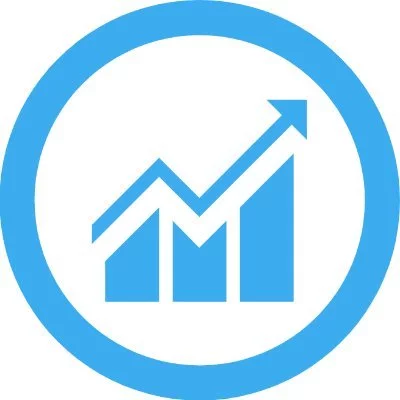There are several on chain analysis tools available in the market, each with its own unique features and functionalities. Here are some of the most popular ones:
Disclosure! This List contains links that may earn us a small commission at no extra cost to you. Our website’s metrics and compensation determine the order of the List. Please don’t consider it as ranking and evaluate items individually.See what other crypto traders are missing
A comprehensive market intelligence platform for cryptocurrencies, focusing on clean and reliable data feeds, low-latency signals, and custom market analysis and leveraging on-chain, social, development, and other data sources.
Actionable On-chain market intelligence and market data analytics
CryptoQuant delivers market and on-chain data via API or directly into Python, R, Excel, and many other tools. Save time and money by getting the data you need in your desired format.
Glassnode brings data intelligence to the blockchain and cryptocurrency space. Glassnode builds applications that provide new ways of delivering insights into blockchains and cryptocurrencies.
Crypto Analytics Platform | Buy Cryptocurrencies
A cloud-based platform that empowers crypto traders and investors with comprehensive data aggregation, trend identification tools, on-chain analysis for DeFi, portfolio management, price tracking, research resources, and education.
Community-powered blockchain analytics platform
Breadcrumbs is a blockchain analytics tool that empowers users to monitor and investigate cryptocurrencies. Follow addresses incoming and outgoing transactions, time, amount, and further information.
Empowering Blockchain Intelligence
IntoTheBlock provides you with unique insights for every crypto asset to make informed investment decisions. Their 50+ indicators and signals provide a unique view of every crypto asset’s behavior.
On-chain Insights for crypto Investors and teams
Nansen analyses billions of on-chain data points, millions of wallet labels, and thousands of entities to present information in simple dashboards that require no technical knowledge.
One stop solution for analytics dashboard
It comes with many features and functions that’ll come in handy when extracting data from the databases. During our Dappquery review, we will explain all of the Dappquery features and how to use them.
Crypto data by and for the community
Dune is a web-based platform for querying Ethereum data by using simple SQL queries from pre-populated databases. Rather than writing a specialized script, you can query the database to extract almost any information that lives on the blockchain.
Research, data, and analytics tools
Messari is a data analysis platform for the global crypto asset community. They believe data is knowledge, and with knowledge, you can invest with confidence.
On-Chain Analysis Tools Guide
Guide to Crypto on Chain Analysis Tools
In recent years, the use of cryptocurrencies has gained significant momentum, and with it, the importance of blockchain technology. Blockchain records all transactions and is publicly available, offering transparency and a means of analyzing the crypto world. It’s where on chain analysis tools come into play. These tools analyze transaction data on the blockchain to gain insights into patterns, trends, and anomalies.
In this guide, we will explore crypto on chain analysis tools, their types, functionalities, and potential applications. We will delve into the technology and methodologies used in these tools and offer guidance on selecting the best one for your needs. Furthermore, we will also address security concerns, potential limitations, and emerging trends that could shape the future of on chain analysis.
Key Takeaways
- Crypto on chain analysis tools offer valuable insights into blockchain transactions and trends.
- There are various types of on chain analysis tools available, such as transaction analysis, address clustering, and network visualization.
- Understanding the inner workings of on chain analysis tools is crucial to select the best one for your needs.
- On chain analysis tools offer numerous benefits, such as empowering users to make informed decisions.
- Choosing the right on chain analysis tool is crucial. You must consider your specific requirements and evaluate the tool’s features, functionality, and user reviews.
Understanding On Chain Analysis
In the world of cryptocurrency, on chain analysis has emerged as a powerful tool for gaining insights into blockchain transactions and trends. At its core, on chain analysis involves studying the publicly available data on the blockchain to track flows of funds and identify patterns of behavior.
On chain analysis is significant in the crypto market because it enables users to understand how assets move within the blockchain network. By studying on chain data, traders, investors, and analysts can gain a deeper understanding of market trends and make informed decisions.
Moreover, on chain analysis is a critical tool for detecting fraud, money laundering, and illegal activities in the cryptocurrency realm.
Why On Chain Analysis Matters
On chain analysis is essential to the success of cryptocurrency because it helps build trust and transparency in the industry. By analyzing on chain data, stakeholders can verify that transactions are legitimate and that no funds are being used for nefarious purposes.
Furthermore, on chain analysis can help uncover new opportunities and areas for growth in the crypto market. By identifying emerging trends and patterns, on chain analysis can help investors make wise decisions.
How On Chain Analysis Works
The process of on chain analysis involves collecting and analyzing data from the blockchain. There are various tools and techniques available for conducting on chain analysis, including graph analysis, clustering, and pattern recognition.
On chain analysis tools use sophisticated algorithms to identify patterns and detect anomalies in the data. They can help users track the flow of funds, identify the sources and destinations of transactions, and provide insights into market trends.
The Role of On Chain Data Analytics
On chain data analytics is a critical aspect of on chain analysis. By studying the data generated by blockchain transactions, analysts can gain valuable insights into market trends, user behavior, and transaction patterns.
On chain data analytics can also be used to develop predictive models and forecast future market trends. By analyzing historical data, analysts can identify patterns and trends that can help predict the future movement of assets within the cryptocurrency market.
- On chain analysis is crucial for understanding blockchain transactions and trends
- It helps build transparency and trust in the crypto market
- On chain analysis tools use sophisticated algorithms to analyze data from the blockchain
- On chain data analytics is essential for predicting future market trends
Types of On Chain Analysis Tools
On chain analysis tools can be classified into various categories based on their functionalities and features. Here are some of the most common types:
| Type | Description |
|---|---|
| Transaction Analysis | This type of tool is designed to analyze transactions on the blockchain network, including their volume, size, and frequency. It can also identify patterns and trends in transaction behavior, such as the use of specific addresses or wallets. |
| Address Clustering | Address clustering tools enable users to group together addresses linked to a specific entity, such as an individual or a business. This functionality is particularly useful for tracking the movement of funds between different wallets or detecting suspicious activities. |
| Network Visualization | Network visualization tools provide a graphical representation of the blockchain network and its activity. This type of tool can help users understand the connections between different nodes, as well as the flow of transactions and funds across the network. |
| Market Analysis | Market analysis tools analyze the behavior and trends of the cryptocurrency market, including price movements, trading volumes, and market capitalization. This type of tool can help users make informed investment decisions and stay up-to-date with the latest market developments. |
| Forensic Analysis | Forensic analysis tools are designed to investigate and track fraudulent activities on the blockchain network, such as money laundering or terrorist financing. This type of tool can provide valuable insights to law enforcement agencies and regulatory bodies. |
Note:
It’s worth noting that some on chain analysis tools offer a combination of these functionalities, while others specialize in a specific area. When selecting a tool, it’s important to consider your specific needs and requirements to ensure that you choose the most suitable option.
How On Chain Analysis Tools Work
To accurately analyze blockchain data, on chain analysis tools employ a combination of technology and methodologies. The process involves several steps, including data collection, data parsing, and data interpretation. Let’s take a closer look at each of these steps:
Data Collection
The first step in on chain analysis is data collection. This involves retrieving data from the blockchain, usually in the form of a transaction history. The data is then stored in a database for further analysis.
Data Parsing
Once the data has been collected, the next step is data parsing. This is the process of extracting relevant information from the raw data. It involves identifying and categorizing individual transactions, including details such as transaction amount, sender and recipient addresses, and transaction fees.
Data Interpretation
The final step in on chain analysis is data interpretation. This is where the extracted data is analyzed to identify patterns and trends. The data is often visualized using charts and graphs to make it easier to understand. On chain analysis tools can help identify suspicious activities such as money laundering or fraud. They can also be used to track the movements of large amounts of cryptocurrency.
Overall, on chain analysis tools are an essential asset for anyone interested in understanding the blockchain and its applications. They provide valuable insights into the movement of cryptocurrencies, enabling users to make informed decisions in the fast-changing world of chain analysis crypto.
Benefits of Utilizing On Chain Analysis Tools
Crypto on chain analysis tools offer several benefits, making them a vital component of the cryptocurrency market. Here are some of the advantages to using on chain analysis:
- Transparency: On chain analysis provides transparency in the blockchain network, allowing users to track and verify transactions.
- Security: On chain analysis helps detect suspicious activities and flag potential fraudulent transactions, thereby increasing security.
- Insights: On chain analysis tools offer valuable insights into transaction history, network behavior, and other important trends.
- Risk Management: On chain analysis enables users to identify and mitigate risks associated with their crypto investments.
- Compliance: On chain analysis helps ensure compliance with regulatory requirements and standards.
By leveraging on chain analysis, users can make informed decisions and improve their overall cryptocurrency experience.
Selecting the Best On Chain Analysis Tool
When selecting an on chain analysis tool, it’s essential to determine which features and functionalities align with your specific needs. While many on chain analysis tools offer free trials or basic versions, investing in a premium tool can offer advanced capabilities and more in-depth analysis. Consider the following factors when selecting an on chain analysis tool:
- Price: Determine your budget and select a tool that offers the features you require at a reasonable cost. Keep in mind that some premium tools may offer more advanced analysis capabilities, which could be worth the investment in the long run.
- Usability: The tool’s interface should be user-friendly and intuitive. Look for a tool that provides clear instructions, tooltips, and easy-to-understand visualizations.
- Functionality: Consider the specific analysis features you require, such as transaction tracing, address clustering, or network visualization. Ensure that the tool provides these functionalities and can process large amounts of data with accuracy and efficiency.
- Customer support: Check if the tool provider offers customer support and training resources, such as FAQs, knowledge bases, or email/phone support. Ensure that the support team is responsive and can address any technical issues that may arise.
- Reviews and ratings: Look for user reviews and ratings from reputable sources, such as industry blogs, review sites, or social media platforms. Analyze the feedback to gain insights into the tool’s strengths and limitations.
In conclusion, selecting the best on chain analysis tool requires careful consideration of various factors such as price, usability, functionality, customer support, and reviews. Finding the right tool can help you gain valuable insights and make informed decisions in the dynamic world of cryptocurrency.
Case Studies: Real-World Applications of On Chain Analysis
On chain analysis tools have already demonstrated their immense potential to uncover valuable insights and detect fraudulent activities in the crypto market. Let’s explore some real-world examples that showcase the practicality of on chain analysis:
Case Study 1: Identifying Darknet Marketplaces
Blockchain analysis firm, Elliptic, used on chain analysis tools to identify and track various darknet marketplaces. By analyzing Bitcoin transactions, Elliptic was able to discover the ownership of several Bitcoin addresses linked to these marketplaces and determine their activities. This approach was successful in aiding law enforcement agencies in shutting down these illegal marketplaces.
Case Study 2: Exposing Money Laundering in Crypto Exchanges
In 2018, a group of researchers used on chain analysis tools to investigate money laundering activities in various crypto exchanges. By analyzing the transaction patterns and flow of funds, they were able to identify the exchange accounts responsible for the majority of the suspicious transactions. This study demonstrated the power of on chain analysis in exposing fraudulent activities and promoting transparency in the crypto market.
Case Study 3: Uncovering the PlusToken Scam
In 2019, the PlusToken scam defrauded investors of $2 billion worth of cryptocurrency. In an effort to track the culprits, Chainalysis and CipherTrace conducted on chain analysis of the stolen funds. This led to the identification of the PlusToken wallets and the movement of funds to various exchanges. As a result, several individuals involved in the scam were arrested, and the stolen funds were recovered.
These case studies demonstrate the immense potential of on chain analysis tools in uncovering valuable insights, detecting fraudulent activities, and promoting transparency in the crypto market. By harnessing the power of these tools, individuals and businesses can make well-informed decisions and stay ahead of the curve in the dynamic world of cryptocurrency.
Challenges and Limitations of On Chain Analysis
Despite the many benefits of on chain analysis tools, there are also significant challenges and limitations to consider. Some of these include:
Data Availability and Quality
One of the main challenges of on chain analysis is the availability and quality of data. While blockchain transactions are transparent and immutable, not all data is publicly available, and some may be incomplete or inaccurate. This can make it challenging to draw accurate conclusions and may require additional data sources or analysis tools.
Privacy Concerns
Another challenge of on chain analysis is the potential breach of privacy. While blockchain transactions are anonymous, on chain analysis tools can often trace transactions back to specific addresses and potentially expose personal information. This can create concerns around data privacy and security and may require additional measures to protect users’ identities and data.
Regulatory Compliance
On chain analysis tools have been increasingly used in regulatory compliance efforts, particularly in the cryptocurrency market. However, navigating regulatory frameworks and compliance requirements can be complex and may require specialized expertise and knowledge.
False Positives and Negatives
On chain analysis tools are not foolproof and can produce false positives and false negatives. False positives occur when the tool identifies potential illicit activity that is not actually present, while false negatives occur when illicit activity goes undetected. This can lead to incorrect conclusions and potentially harm innocent parties.
| Challenges | Solutions |
|---|---|
| Data Availability and Quality | Use multiple data sources, employ advanced data cleaning techniques, and verify data accuracy and completeness. |
| Privacy Concerns | Implement privacy-focused measures such as encryption, multi-party computation, and differential privacy. |
| Regulatory Compliance | Partner with regulatory compliance experts and stay up-to-date with regulatory frameworks and guidelines. |
| False Positives and Negatives | Combine on chain analysis tools with other analytical approaches, refine algorithms, and conduct thorough investigations before taking action. |
By acknowledging these challenges and implementing appropriate solutions, on chain analysis tools can be effective in identifying patterns, detecting fraud, and uncovering valuable insights in the crypto world.
Security and Privacy Considerations
When utilizing on chain analysis tools, it’s crucial to prioritize security and privacy to safeguard your data and prevent unauthorized access. Here are some essential considerations to keep in mind:
- Use reputable on chain analysis tools: Ensure that the tool you use is from a trusted source and has a proven track record of protecting user data.
- Protect your private keys: Your private keys are the gatekeepers to your crypto assets. Keep them safe and secure using a hardware wallet or an offline storage option.
- Avoid sharing sensitive data: Do not share your sensitive data such as passwords or private keys with anyone. Always choose strong, unique passwords and enable two-factor authentication wherever possible.
- Be cautious of public Wi-Fi: Public Wi-Fi networks are often unsecured and can be used by hackers to access your device. Avoid using these networks when accessing your crypto wallets or on chain analysis tools.
- Stay updated: Regularly update your on chain analysis tools and operating systems to ensure that security vulnerabilities are patched.
By prioritizing security and privacy when utilizing on chain analysis tools, you can protect your data and investments from potential threats.
Future Trends in On Chain Analysis
The field of on chain analysis is continually evolving with new advancements that are shaping the way individuals and businesses interact with blockchain technology. The demand for more sophisticated on chain data analytics tools is on the rise as the crypto market becomes more competitive and complex.
1. Machine Learning and AI in On Chain Analytics
The integration of machine learning (ML) and artificial intelligence (AI) is expected to revolutionize on chain analytics by enabling faster and more accurate data analysis. These technologies can help identify patterns and predict market trends, ultimately enabling users to make more informed investment decisions.
2. Enhanced Privacy and Security Features
As the importance of privacy and security in on chain analysis becomes more apparent, the use of advanced encryption and privacy protection features is likely to increase. Look out for tools that offer end-to-end encryption, two-factor authentication, and other enhanced security features.
3. Integration with Traditional Financial Systems
As the crypto market grows, traditional financial institutions are increasingly looking to get involved. The integration of on chain analytics tools with traditional financial systems is expected to become more prevalent, enabling better regulation and management of crypto transactions.
4. Use of Predictive Analytics
Predictive analytics is another trend that is likely to shape the future of on chain analysis. By analyzing historical data, predictive analytics can offer insights into future market trends and help identify potential risks or opportunities. Expect to see more on chain analytics tools that include predictive analytics features.
5. Increased Adoption of Blockchain Technology
The adoption of blockchain technology is expected to increase in the coming years, leading to a greater need for on chain analysis tools. As more businesses start using blockchain technology, on chain analytics will become a crucial component of their decision-making processes.
Resources and Further Reading
To deepen your understanding of on chain analysis tools and crypto chain analysis, we recommend the following resources:
- Blockchain.com – a popular on chain analysis tool that provides real-time data for Bitcoin, Bitcoin Cash, and Ethereum, including transaction volume, mining difficulty, and more.
- Coin Metrics – a leading provider of crypto asset market and network data, offering insights into on chain metrics, market data, and more.
- Binance Academy – an educational platform that covers various topics related to blockchain technology, including on chain analysis tools and techniques.
- Whale Alert – a Twitter account that tracks large crypto transactions, providing insights into whale movements and market trends.
By staying up-to-date with the latest developments and utilizing reputable on chain analysis tools, you can gain a competitive edge in the ever-changing world of cryptocurrency.
Most Popular On-Chain Data.
There are hundreds of on-chain data, and each one of them represents various information. By following and understanding the unique ones, investors can stay ahead of the market and gain insights to make profitable trading decisions. These are the most prominent on-chain data that can determine the daily price.
- Number of active addresses
- Number of new addresses
- Transactions volume
- Network value to the transaction
- Exchanges inflow/outflow.
Benefits of On-Chain Data.
Firstly, there are various benefits of involving on-chain data analysis in your daily trading routine. After viewing important on-chain metrics like the number of active addresses and the number of transactions, traders can know when there’s a high demand on the network therefore, prices will rise.
Also, you can know about the market and investor behavior by looking at on-chain metrics. For instance, think of market capitalization as the participation of all traders, and realize capitalization could be the participation of long-term investors.
Finally, smart traders know, and novice traders should know as well how valuable on-chain data is. And on-chain data analysis platforms have made viewing such important data simple, easy, and smooth.
Conclusion
On chain analysis tools offer immense potential for gaining insights, identifying trends, detecting fraud, and making informed decisions in the crypto world. By understanding the different types of tools available, their underlying technology, and methodologies, you can select the one that aligns with your specific requirements.
When evaluating on chain analysis tools, it’s essential to consider their limitations and security implications. By adopting best practices and maintaining confidentiality, you can safeguard your data and protect your business from threats.
The future of on chain analysis looks promising, with emerging trends such as machine learning, data visualization, and privacy-enhancing technologies. Keeping abreast of these developments and staying informed can provide a competitive edge in the dynamic world of cryptocurrency.
Stay Ahead with On Chain Analysis Tools
Whether you are an individual investor or a business owner, on chain analysis tools can provide valuable insights into the crypto market. By leveraging their power, you can stay ahead of the curve, make well-informed decisions, and unlock new opportunities. To learn more about on chain analysis tools, explore the resources and recommended readings in this guide.
Start harnessing the power of on chain analysis tools today and unlock a world of possibilities in the exciting crypto landscape.
On-Chain Analysis Tools F.A.Q
What is on chain analysis?
On chain analysis refers to the process of analyzing data recorded on a blockchain to gain insights into transactions, trends, and patterns within the cryptocurrency ecosystem.
Why is on chain analysis important in the crypto market?
On chain analysis is crucial in the crypto market as it enables users to track and understand the flow of digital assets, identify potential risks or fraudulent activities, and make informed decisions based on transparent data.
What are the types of on chain analysis tools available?
There are various types of on chain analysis tools, including transaction analysis tools, address clustering tools, and network visualization tools. These tools help users explore and interpret blockchain data more effectively.
How do on chain analysis tools work?
On chain analysis tools employ advanced algorithms and data analytics techniques to analyze blockchain data. They explore transaction histories, address relationships, and network behaviors to provide valuable insights and visual representations.
What are the benefits of utilizing on chain analysis tools?
Utilizing on chain analysis tools empowers individuals and businesses in the crypto space to make informed decisions, identify potential risks, enhance security measures, improve compliance efforts, and gain a deeper understanding of market trends.
How can I select the best on chain analysis tool?
When selecting an on chain analysis tool, it’s important to evaluate factors such as functionality, ease of use, accuracy, data privacy, and compatibility with your specific needs. Consider conducting research, reading user reviews, and testing out trial versions before making a decision.
Which are some popular on chain analysis tools?
Some popular on chain analysis tools in the market include Chainalysis, Elliptic, CipherTrace, and Coinfirm. These tools offer a range of features, functionalities, and integrations to assist users in their analysis and monitoring activities.
Can you provide real-world case studies of on chain analysis applications?
Yes, on chain analysis has been applied in real-world scenarios to identify money laundering activities, detect fraudulent transactions, aid in law enforcement investigations, and provide transparency in supply chain management. These case studies demonstrate the practicality and value of on chain analysis.
What are the challenges and limitations of on chain analysis?
On chain analysis faces challenges such as privacy concerns, the increasing use of privacy-enhancing technologies like mixers and anonymity coins, and the need for continuous monitoring and adaptation to evolving blockchain technologies. It’s important to be aware of these limitations when utilizing on chain analysis tools.
How can I ensure security and privacy when using on chain analysis tools?
To safeguard your data and maintain confidentiality when using on chain analysis tools, it’s recommended to choose reputable and secure platforms, encrypt sensitive information, implement proper access controls, and stay updated on best practices for data security.
What are the future trends in on chain analysis?
The field of on chain analysis is constantly evolving. Future trends may include advancements in data visualization, integration with artificial intelligence and machine learning technologies, improved privacy-preserving analytics techniques, and enhanced capabilities to analyze decentralized finance (DeFi) protocols.
Where can I find further resources and reading materials on on chain analysis?
To deepen your understanding of on chain analysis, you can explore additional resources and reading materials such as research papers, industry reports, blog articles, and online forums dedicated to cryptocurrency analytics and blockchain technology.
How Does On-Chain Analysis Platforms Work?
On-chain analysis platforms work in five stages: inspecting, identifying, clustering, modeling, and visualizing. Firstly, platforms inspect the blockchain just like anyone can do. Afterward, they start identifying or highlighting all the wanted data like addresses, values, gas prices, and more. Then, on-chain analysis platforms start grouping and updating retrieved data. After that, they start creating a data model by applying specific formal techniques. Finally, on-chain data is represented in interactive, simple, and helpful charts.










